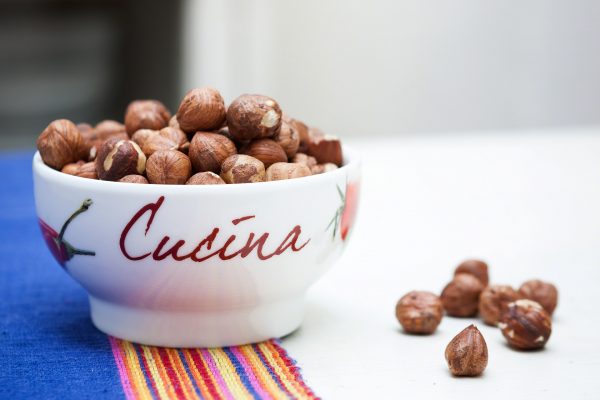Hazelnuts are the perfect snack – rich in energy and great with pre-dinner drinks!
Origin
The tonda gentile hazelnut of Piedmont, also called a Trilobata or Langhe hazelnut, is one of the most widely used varieties for baking. Its extra hard shell sets it apart from other hazelnuts and its yield makes it considered one of the best varieties in the world. These hazelnuts originate in lower Piedmont, between the provinces of Cuneo, Asti and Alessandria, in the hilly region that includes Langhe, Roero and Monferrato. Their history is tightly linked to the invention of Gianduja cream. When Napoleon imposed an embargo on England in 1806, cacao became increasingly difficult to get ahold of. Confectioners in Turin started substituting some with tonda gentile hazelnuts. This led to the creation of a new delicacy that became known as Gianduja, and brought fame to this prized variety of hazelnuts. They’ve had PGI status since 1993.
Cookit
Tonda gentile hazelnuts are often eaten on their own or with drinks, because they’re highly fragrant when toasted. But they’re at their finest in baking. Their low fat content and their mild aroma go perfectly with cacao. The best Gianduja creams use this variety, and can be found in hazelnut cakes, baci di dama cookies and gianduiotto chocolates, and can be used in oil to drizzle over delicate fish dishes. Ground into a soft paste, hazelnuts give an irresistible flavor to roasted meats.
Did you know
In ancient Rome, people would make offerings of hazelnut plants called Corylus Avellana as a symbol of happiness. In Grimm’s fairy tales and Walt Disney stories, hazelnut trees even had magical powers, as they did in folklore from many European countries. Interestingly, these days they also have a very different use: wood from tondo gentile hazelnut trees create very fine embers that, when mixed with sulfur and potassium nitrate, can be used to create gunpowder.






